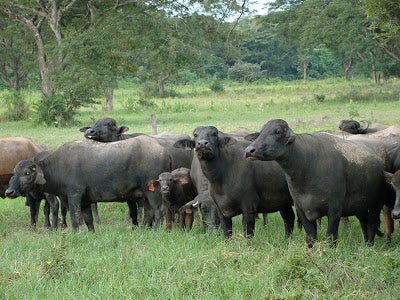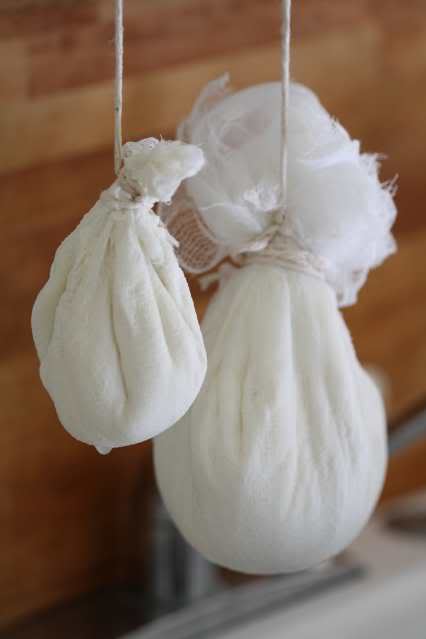 |
| Richard with Tiger (just a puppy) |
My family has farmed for generations in the south west of England. I was brought up on a farm and studied agriculture at Newcastle University.
At graduation, my father suggested that I should take advantage of a time when both he and my grandfather were still fit and able, to see something of the world. I saw an advertisement in the farming press looking for young men from farming backgrounds to work on large cattle ranches in Venezuela as assistant managers.
 |
| His farm is called La Fortuna (The Fortunate), located in the state of Apure, near a town called Ashaguas. |
The Vestey family owned the farms. They are the UK’s largest beef group and used to be one of the largest ranching setups in the world with operations in Australia, Brasil and Venezuela.
Fifteen years ago, I realized that I would rather farm for myself than carry on as a farm manager and, due to family circumstances, decided to chance my luck with a bit of undeveloped land here in the llanos, (plains); 2700 acres. I started with ranching white Brahman cattle and a few buffalo and soon discovered that milking the buffalo was by far the most profitable enterprise.
I, therefore, gradually phased out the Brahman cattle and now farm buffalos exclusively. That was a good decision. Buffalo are still considered as slightly exotic, but here in the tropics they are easily the best dairy option, since European dairy breeds cannot survive the conditions and the Zebu type cattle are very poor milkers.
The buffalo cow will give 1200-1500 litres (317-396 gallons) per lactation from grass with no extra feeding costs. They are consistently more fertile and last for 20 years.
The llanos region of Venezuela is almost the same climatically as northern India and Pakistan where the water buffalo originate from, whereas European cattle have to be cross bred in order to survive the conditions. If I sound a bit like an evangelist for water buffalo it is because they really are tailor made for this environment.
I have a total of about 450 head with calves, open cows (non-pregnant), bulling heifers and heifer weaners. This was a piece of unfenced savannah and woodland when I bought it. Today, I have about 1000 acres of improved grassland split into 11 paddocks with electric fencing. This is the land mainly used in the wet season.
Once the dry season starts (Dec-April), I start to use the flooded area of the farm which gradually dries out over the dry season. The flooded area is composed of water grasses and rushes etc, ie they are grazeable areas. There is still extensive areas of woodland that don´t really contribute much to the buffalos diet, but I use these areas for the stock not in milk.
Breeding is principally by natural service but I have started a limited AI (artificial insemination) programme this year.
The cow raises her own calf. After milking in the morning the calf is left with it’s mother until 3 pm. At this point the calves are shut in until the following morning when they are reunited with their mothers at milking. This practice is important because buffalo cows are very reticent with their milk and are most uninclined to let the milk down without the suckling impulse.
Also, artificial rearing of buffalo calves has had disastrous rates of mortality where it has been tried. Those farmers that milk buffalo twice a day without calf-induced let-down, rear the calves with foster mothers. However, I reckon that this is a case of fighting nature and stick to our system of once a day milking with each cow responsible for rearing it’s own calf. My motto is cheap, simple and efficient. The last part refers to good grass management so as to avoid costly supplementary feeding. Low input/ moderate output!
This is not an organic farm but there is not much that stops it from being so.
I am now milking 150 buffalo cows. At the moment I am getting between 6-700 litres (158-184 gallons) a day from one milking. The cheese I sell to a wholesaler, once a week, who takes it to Valencia, a large city in Venezuela.
As there is no dairy infrastructure in the area, I make a traditional farmhouse white cheese (Queso Blanco) with just rennet and salt, fermentation coming from naturally occurring bacteria (hygiene is counter productive!). This is a staple in Venezuelan families and is therefore easy to sell, but not worth much more than the milk that goes to make it.
We make the cheese every morning after milking. It takes a couple of hours start to finish. We are lucky that the ambient temperature is about 30C (86F).
 |
| The milk is machine milked into the churns, then hand emptied, via milk filter, into the blue containers (shown below) |
I asked if there is a big difference in taste between Queso Blanco made with water buffalo milk and the same cheese made with cow’s milk?
There is undoubtedly a marked difference. Generally, people like the buffalo cheese, and some definitely prefer it.
The buffalo cheese is very good fresh, with a nutty milky flavour, not unlike Mozzarella. At ambient temperatures it becomes good and cheezy with an acidic bite at 5-10 days, but it soon develops a nasty bitter flavour after this if it is not well refrigerated. Since this type of cheese is consumed quickly, this is not usually a problem. Certainly, cow’s milk Queso Blanco does not appear to suffer from this problem.
Since there is no price advantage to buffalo cheese, we do not make an issue of it. I sell about 600-700 kilos (1323-1543 pounds) a week, the majority to the wholesaler who gives me no price benefit for the cheese being made from buffalo milk. Any consideration that I get is because the cheese is well made and mainly for the quantity. But I also sell about 100 kilos (220 pounds) to a small store in the local town, where I have a “faithful following” who give my cheese a high rating. (This is a traditional Queso Blanco producing area, so they reckon that they know what they are talking about.)
 |
| Each container holds 40 gallons of milk. |
Years ago they used to make a “Queso del Año” that was made like mine but preserved during the wet season, when transport was difficult, in salted whey and then removed and covered in a variety of preservatives including used coffee grounds, cow dung (the skin is cut off!) and annatto which occurs naturally here. I have come across this cheese occasionally, it’s very hard and very strong flavoured.
I am still very much a novice and with limited supplies of materials here, I have to improvise a great deal, still I hope to be able to produce better quality cheeses commercially in the future. Everyone asks me why I don’t make Mozzarella; it is because most of the go-ahead buffalo farmers here are already making it and also because I am too far from a market to regularly sell what is a fresh cheese. I might have a go some other time.
 |
| Curds after the rennet has coagulated the milk |
 |
| Salt for the curds |
 |
| The material in the molds is cotton t-shirt cloth |
 |
| The presses |
 |
| Finished cheese |
 |
| There is no wrapping. Once a week, the cheeses go into large plastic boxes in the back of Richard’s pick-up and he takes them into town where they are handed over to the wholesalers. |
Life off the beaten path:

We live about 4 miles off the black top up a raised dirt road. We built the farm house over the last 4 years, and I try to spend as much time living there as possible. We have a house in town, 40 minutes away, because my wife works as head teacher in a local primary school and my youngest son is still at school. I have a daughter and elder son at university.
Personally, I have always lived in the country, and don’t like town living. While I worked for the ranching company, we were 2 hours from the black top in the dry season and an hour and a half up the river in a speedboat during the wet. Where my farm is now is civilization in comparison, with main electricity at least. I spent years living with diesel generators, a real nightmare.
I bought Ricki Carroll´s book (Home Cheese Making) a number of years ago to try and make British type cheeses for my own consumption. My first attempts were terrible; no matter how much I varied the temperature, timing, ph or whatever they all ended up as hard as rock with very little flavour. So I gave up. Now I have started experimenting again and have discovered that by cutting the curds bigger and pressing less, I can get a texture that is a lot better. The other variable here is the ambient temperature that is 30-35ºC (86-95F).
Queso Blanco here has always been salty as a means of preserving it at these tropical temperatures and, as such, the national palate likes salty cheese. Personally, I`m not a great fan but I do like my own cheese as we tend to use a little less salt than the norm.
Has anyone any experience of working with buffalo milk (other than Mozzarella)? There are people starting to make a variety of cheeses commercially here with buffalo milk: Feta, Gouda, Parmesan that I know of, but they are a little reserved about sharing their experiences. Still, half the fun is the trial and error and finding out for oneself.



















































































































































